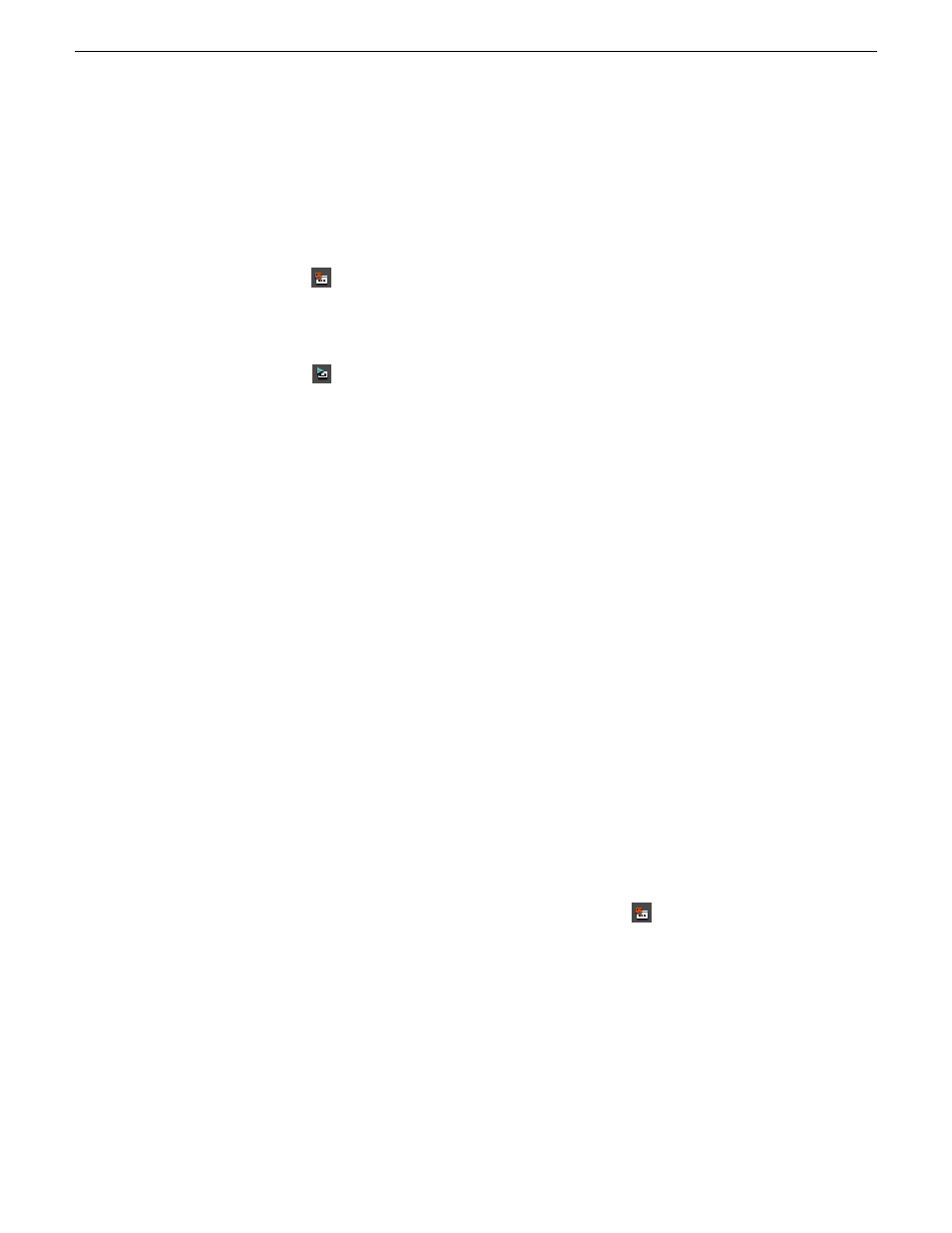Grass Valley Aurora Edit v.7.0 User Manual
Page 240

Make sure that you have rendered all effects before recording a sequence to tape;
non-rendered effects don’t record and won’t be visible on the tape.
1. Save your sequence and close it.
2. Cue your record tape to an appropriate recording spot.
Click the
Record To Bin
button and play the tape to determine an appropriate
spot to start recording.
3. Highlight the sequence you wish to record by clicking the sequence title in the Bin
window.
4. Click the
Play to Tape
button in the main toolbar.
The Play To Tape window appears.
5. Click the
Settings
button and verify settings in the Play Settings window.
6. Select an edit mode for the record:
•
Insert Edit--Records new material at an intermediate point of an existing
recording, using the existing timecode. You can send individual tracks to the
tape as well.
•
Assemble Edit--Records new material at the end of a pre-recorded section of
the tape, changing the timecode.
•
Crash Record--Initiates a record without using the auto-edit function, eliminating
the need for preroll; results in a record that doesn't have a frame-accurate start
position.
The Insert and Assemble Edit modes work only with decks that have Auto-Edit
functions. Check your tape deck’s user manual to determine if it supports this
feature.
7. Mark an In point.
The timecode of the record tape shows up at the Mark In point.
8. Press
F12
on the keyboard, or click the
Record
button, to start recording.
After the sequence is done recording, the deck will stop.
9. Close the Play To Tape window.
You can review your recorded story on tape by clicking the
Record To Bin
button
in the main toolbar.
Related Links
on page 200
on page 141
240
Aurora Edit User Guide
08 April 2010
Sending and exporting output
